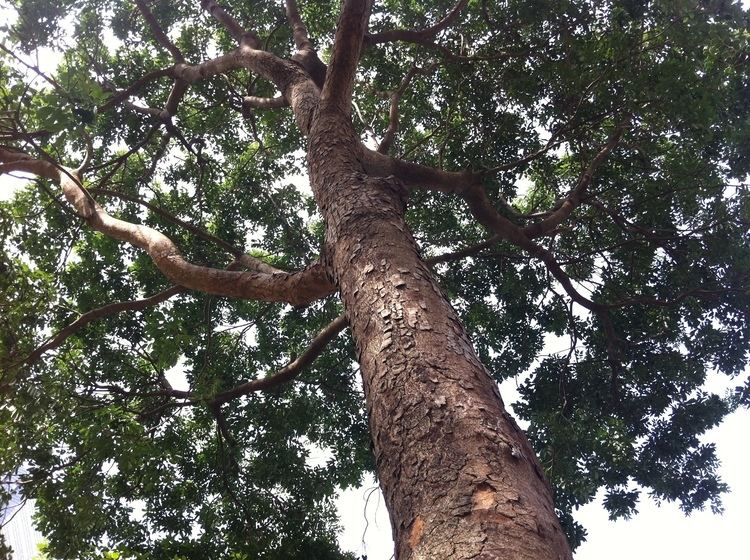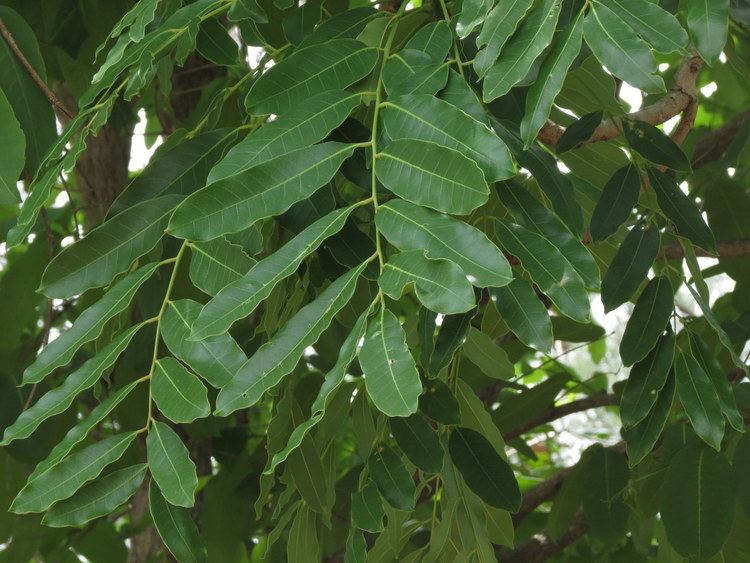Rank Species | Genus Khaya Higher classification Khaya | |
 | ||
Similar Khaya, Khaya ivorensis, Meliaceae, Khaya anthotheca, Swietenia | ||
Khaya senegalensis is a species of tree in the Meliaceae family that is native to Africa. Common names include African mahogany, dry zone mahogany, Gambia mahogany, khaya wood, Senegal mahogany, cailcedrat, acajou, djalla, and bois rouge.
Contents

Description

African mahogany is a medium-sized tree which can grow up to 15–30 m in height and 1 m in diameter. The bark is dark grey to grey-brown while the heartwood is brown with a pink-red pigment made up of coarse interlocking grains. The tree is characterised by leaves arranged in a spiral formation clustered at the end of branches. The white flowers are sweet-scented; the fruit changes from grey to black when ripening.
Distribution and habitat

The tree is native to Benin, Burkina Faso, Cameroon, Central African Republic, Chad, Ivory Coast, Gabon, Gambia, Ghana, Guinea, Guinea-Bissau, Mali, Niger, Nigeria, Senegal, Sierra Leone, Sudan, Togo, and Uganda. It is found in riparian forests and higher-rainfall savannah woodlands; in moist regions it is found on higher ground. Within its first year, the seedling develops a deep root system that makes it the most drought resistant member of its genus.
Uses

The wood is used for a variety of purposes. It is often used conventionally for carpentry, interior trim, and construction. Traditionally the wood was used for dugout canoes, household implements, djembe, and fuel wood. The bitter tasting bark is used for a variety of medical purposes; it is taken against fever caused by malaria, stomach complaints, and headaches. It is applied externally to cure skin rashes, wounds, or any abnormality. It has been exported from West Africa (Gambia) to Europe since the first half of the 19th century and has been exploited heavily for its timber. It is now used more locally, and is planted ornamentally as a roadside tree.
Conservation and threats

K. senegalensis has experienced high amounts of exploitation, and little regeneration takes place once disturbance occurs. Because of this the IUCN Red List of Threatened Species considers it a vulnerable species. The only conservation which takes place are log export bans and legal protection in some countries.
